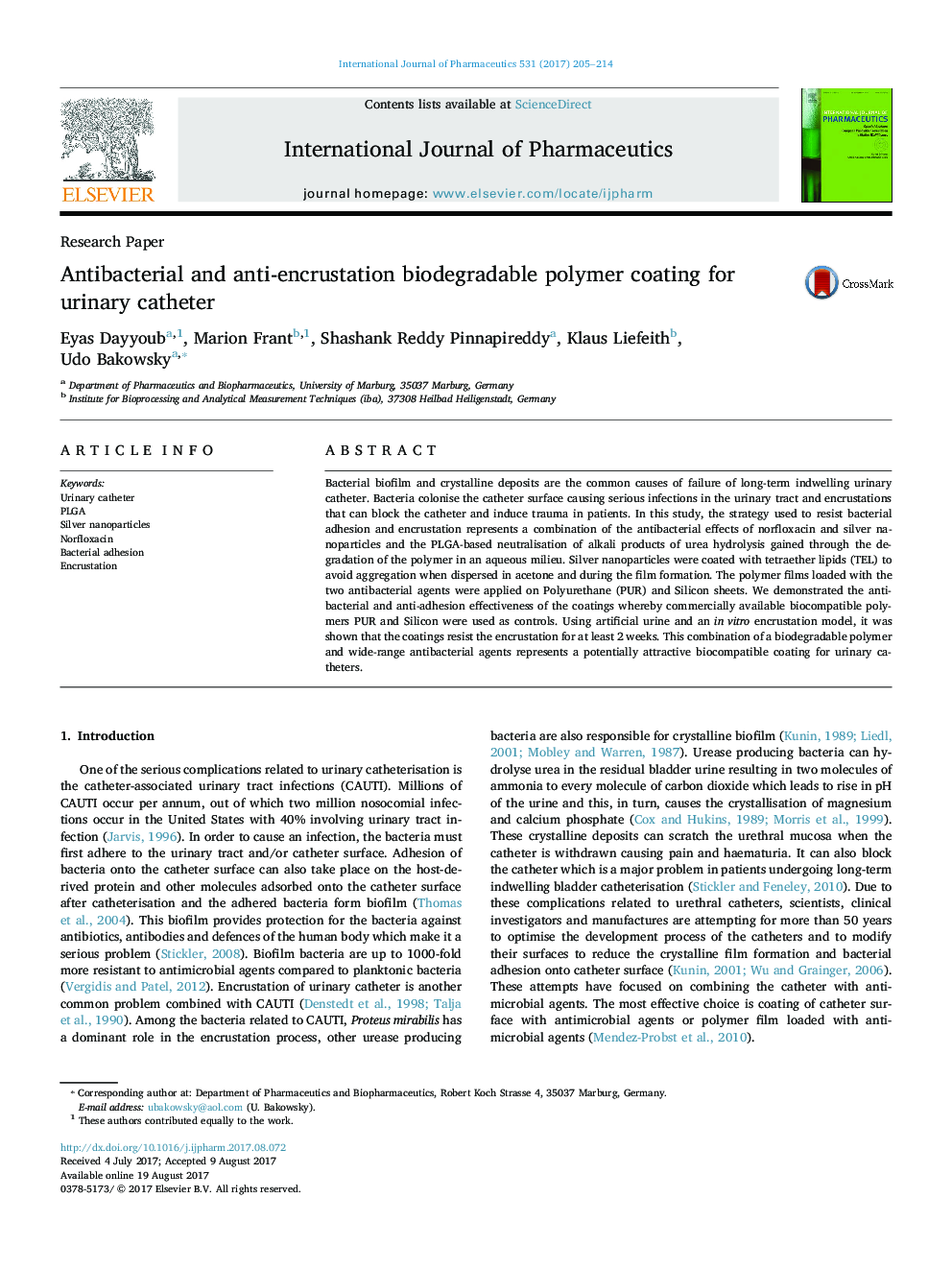| Article ID | Journal | Published Year | Pages | File Type |
|---|---|---|---|---|
| 5549985 | International Journal of Pharmaceutics | 2017 | 10 Pages |
Bacterial biofilm and crystalline deposits are the common causes of failure of long-term indwelling urinary catheter. Bacteria colonise the catheter surface causing serious infections in the urinary tract and encrustations that can block the catheter and induce trauma in patients. In this study, the strategy used to resist bacterial adhesion and encrustation represents a combination of the antibacterial effects of norfloxacin and silver nanoparticles and the PLGA-based neutralisation of alkali products of urea hydrolysis gained through the degradation of the polymer in an aqueous milieu. Silver nanoparticles were coated with tetraether lipids (TEL) to avoid aggregation when dispersed in acetone and during the film formation. The polymer films loaded with the two antibacterial agents were applied on Polyurethane (PUR) and Silicon sheets. We demonstrated the antibacterial and anti-adhesion effectiveness of the coatings whereby commercially available biocompatible polymers PUR and Silicon were used as controls. Using artificial urine and an in vitro encrustation model, it was shown that the coatings resist the encrustation for at least 2 weeks. This combination of a biodegradable polymer and wide-range antibacterial agents represents a potentially attractive biocompatible coating for urinary catheters.
Graphical abstractDownload high-res image (106KB)Download full-size image
